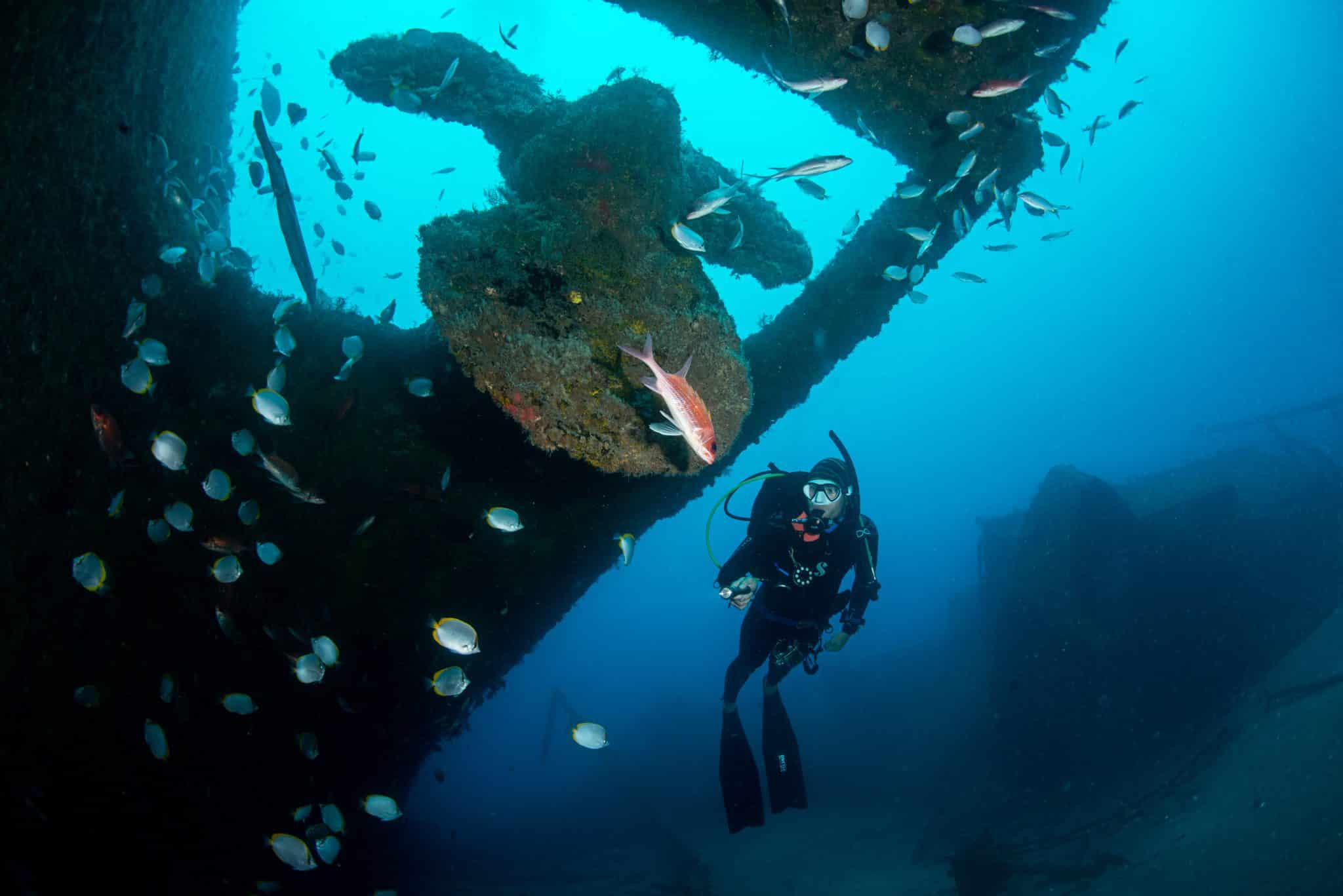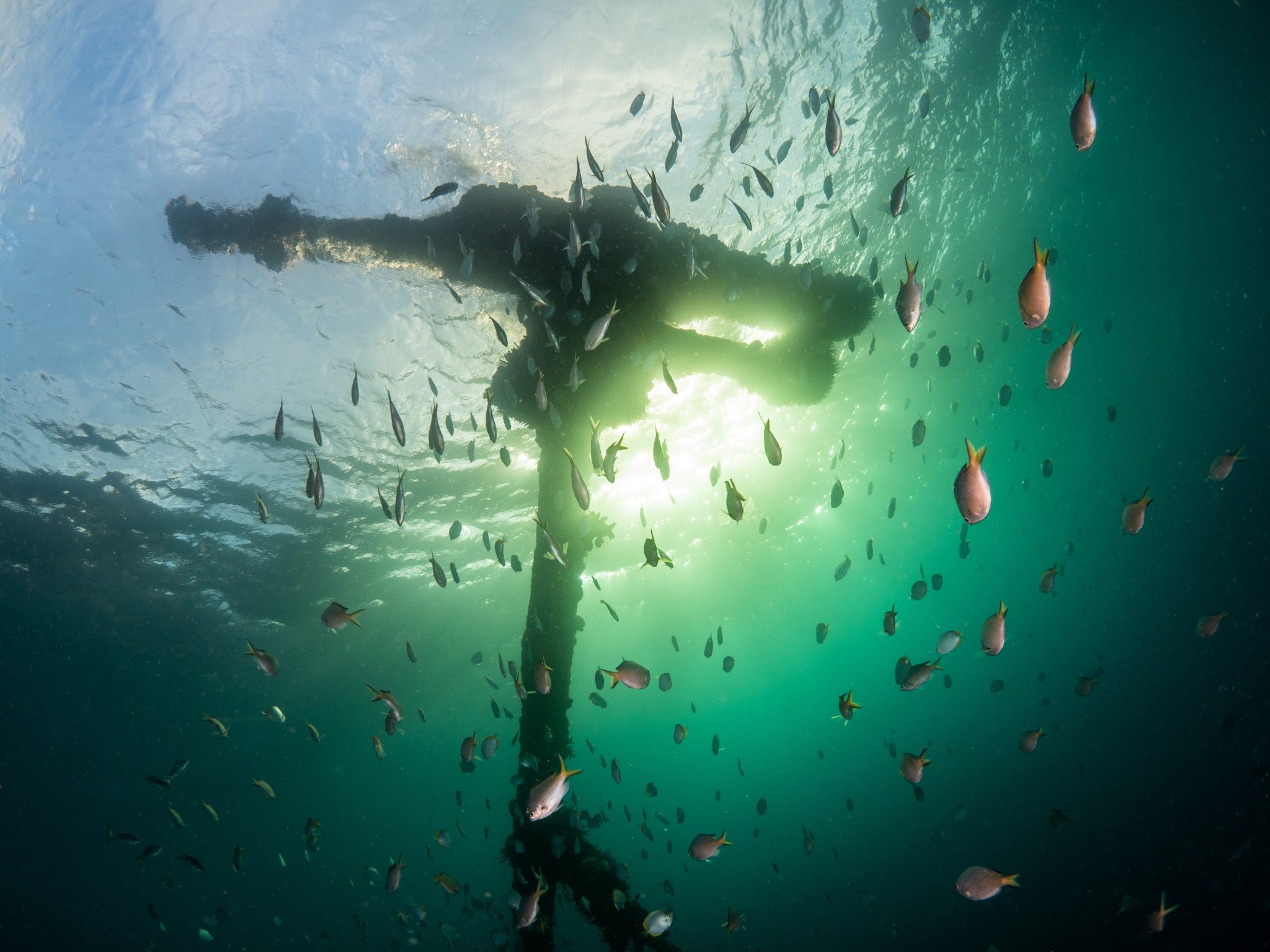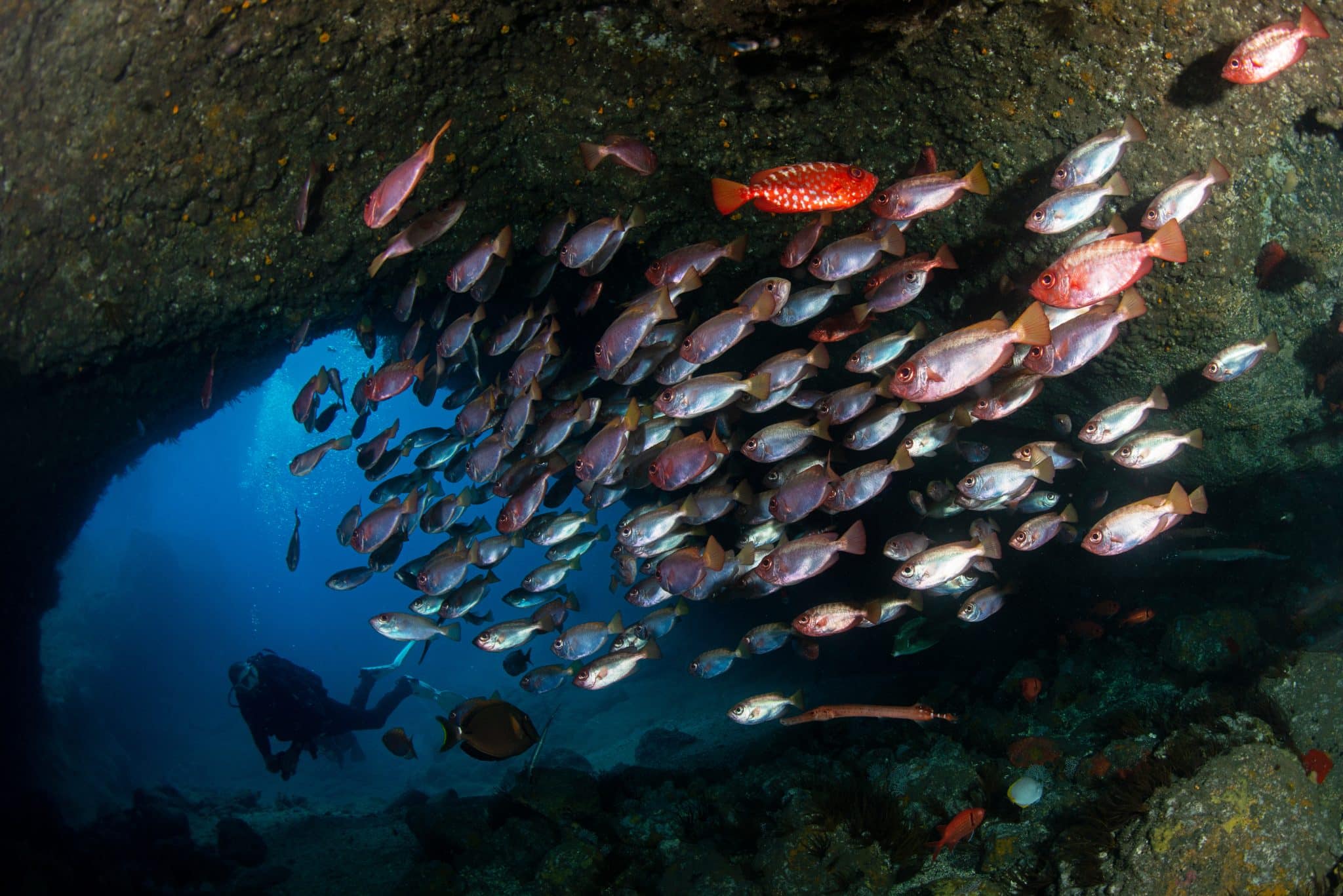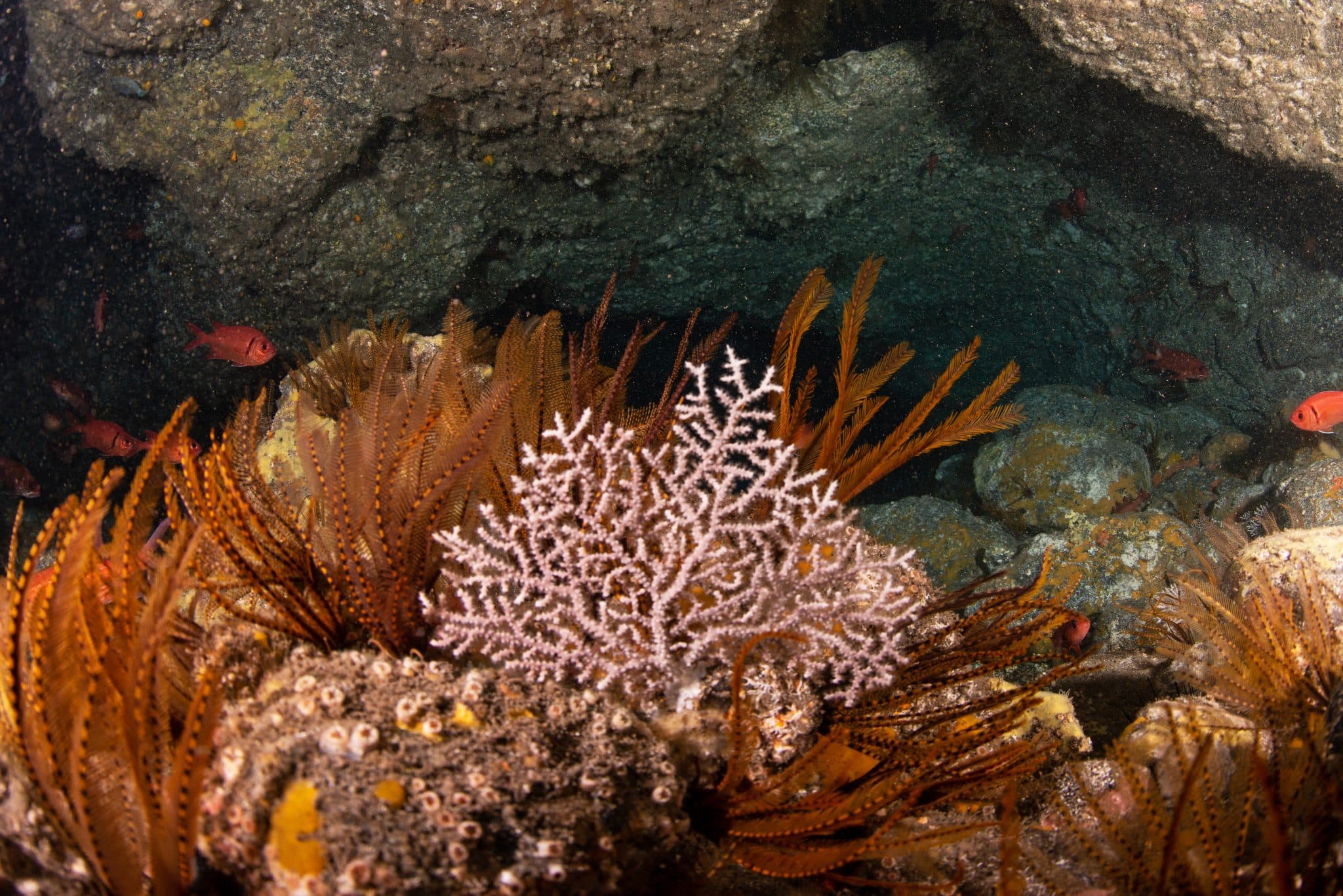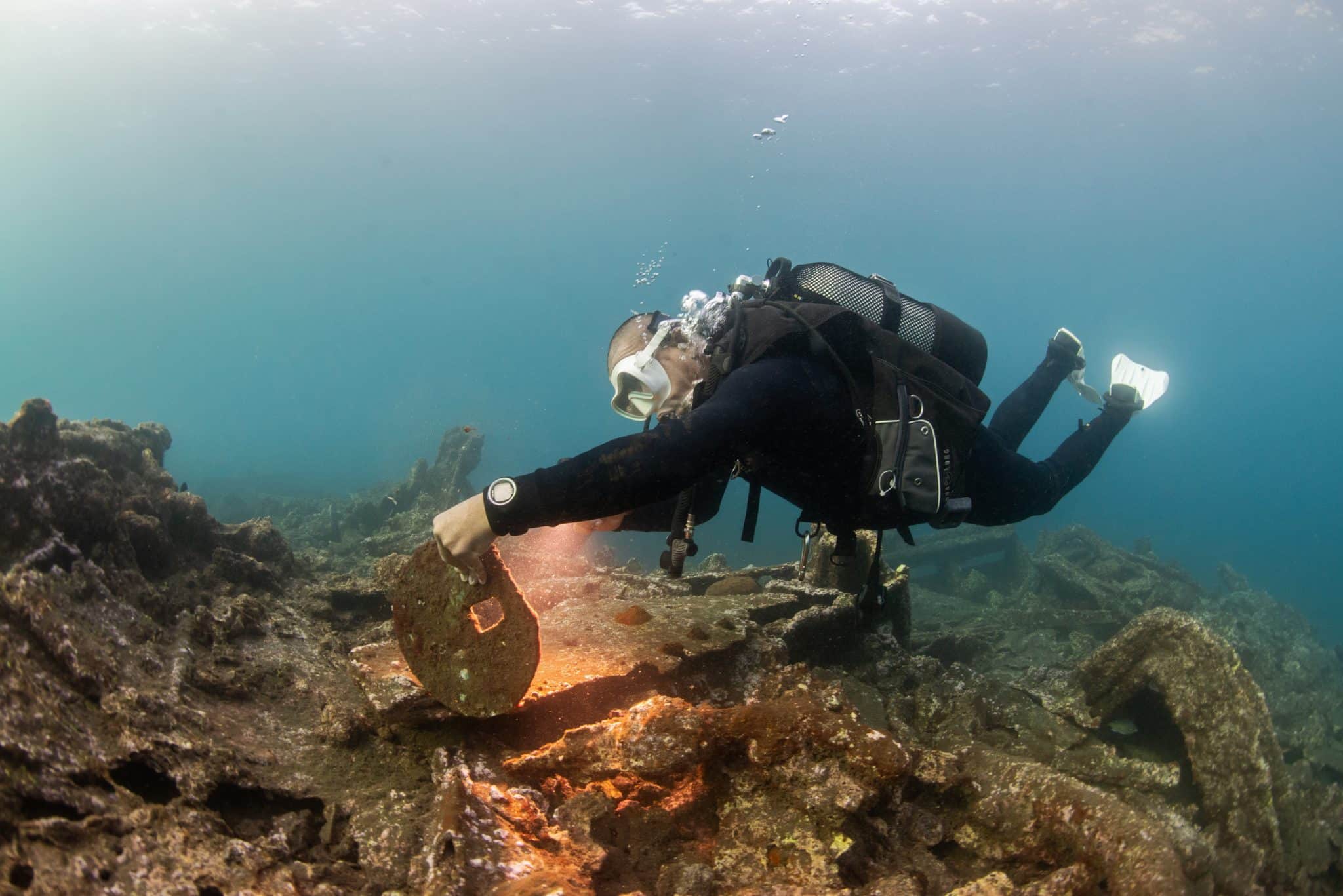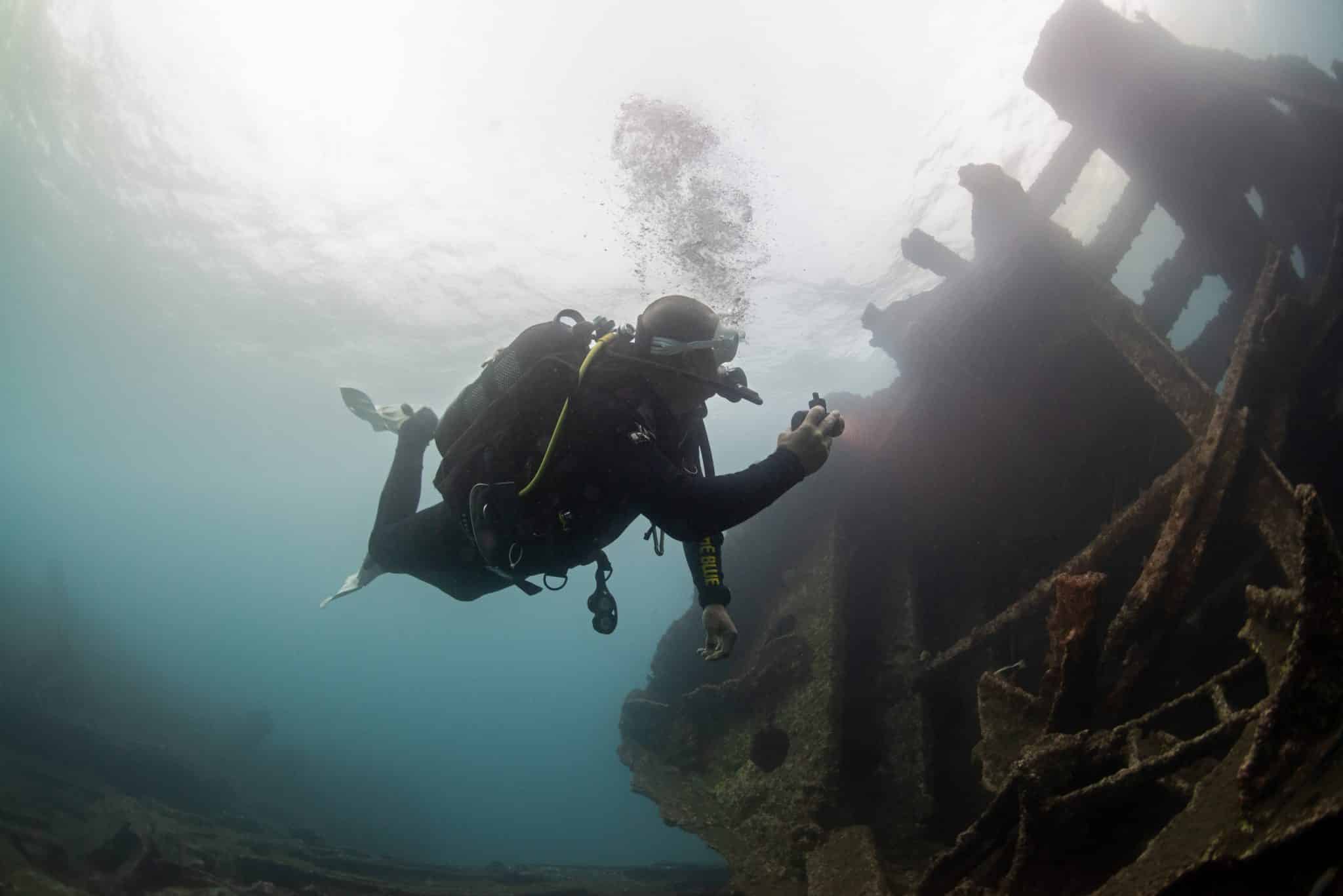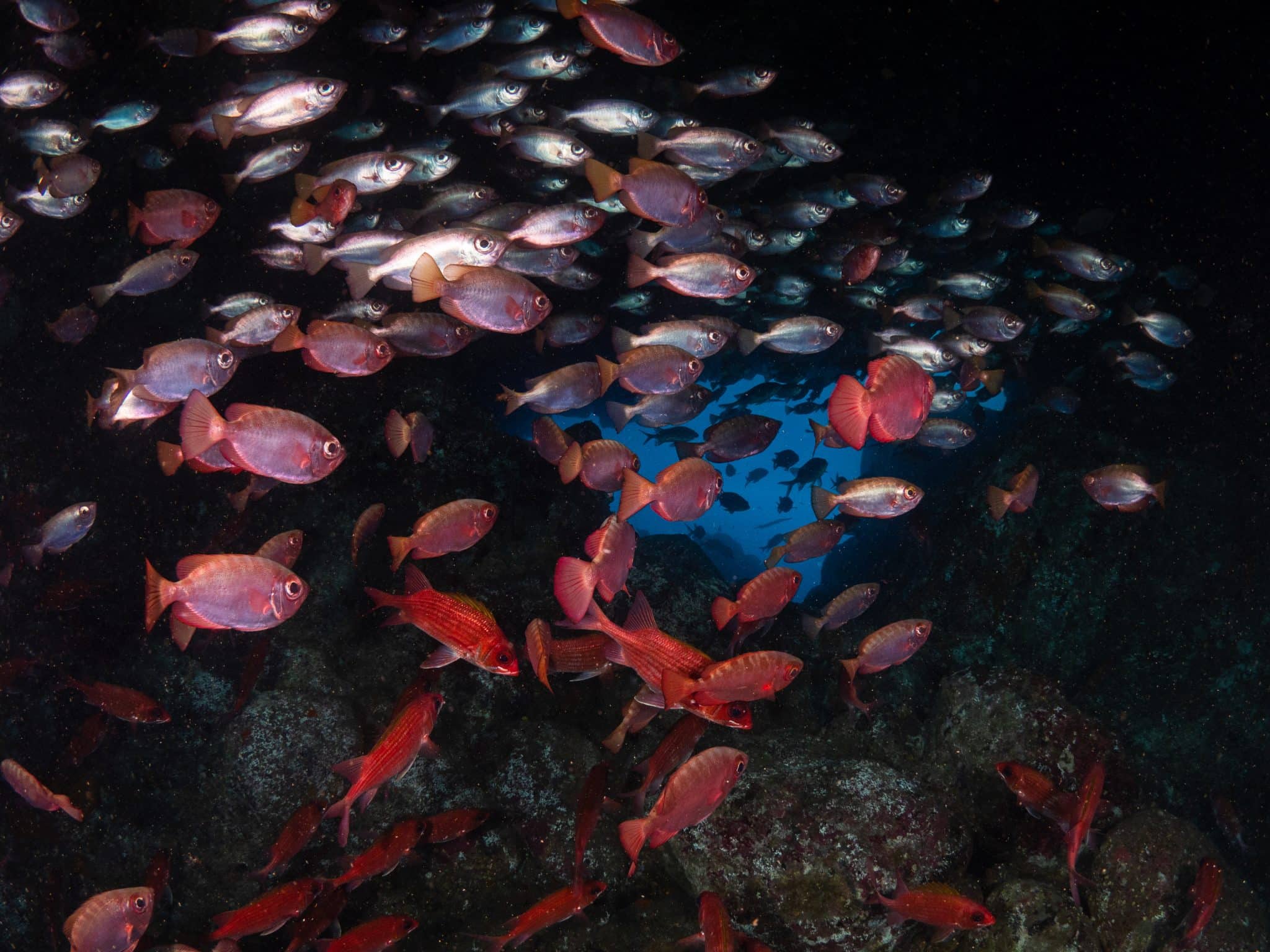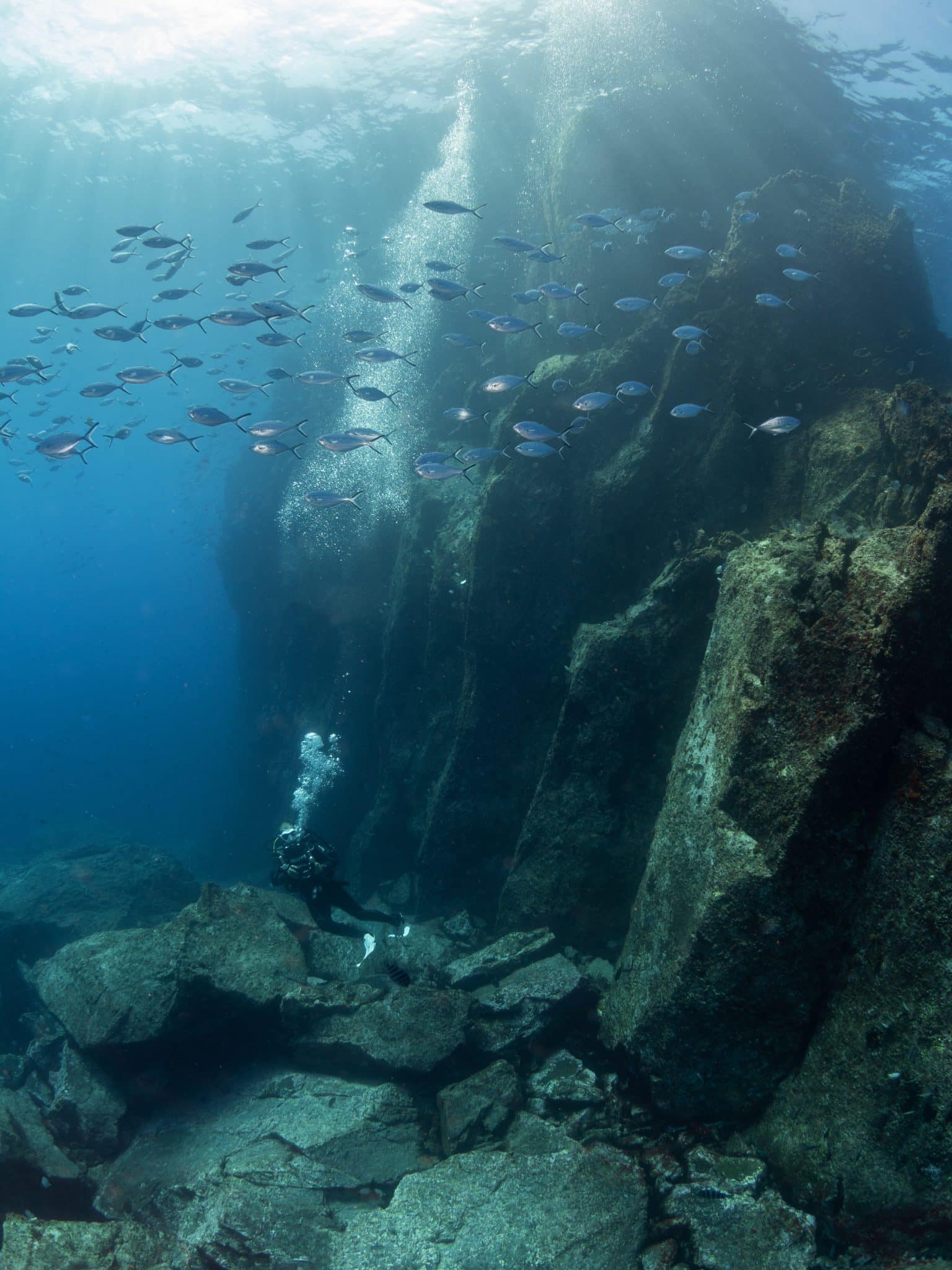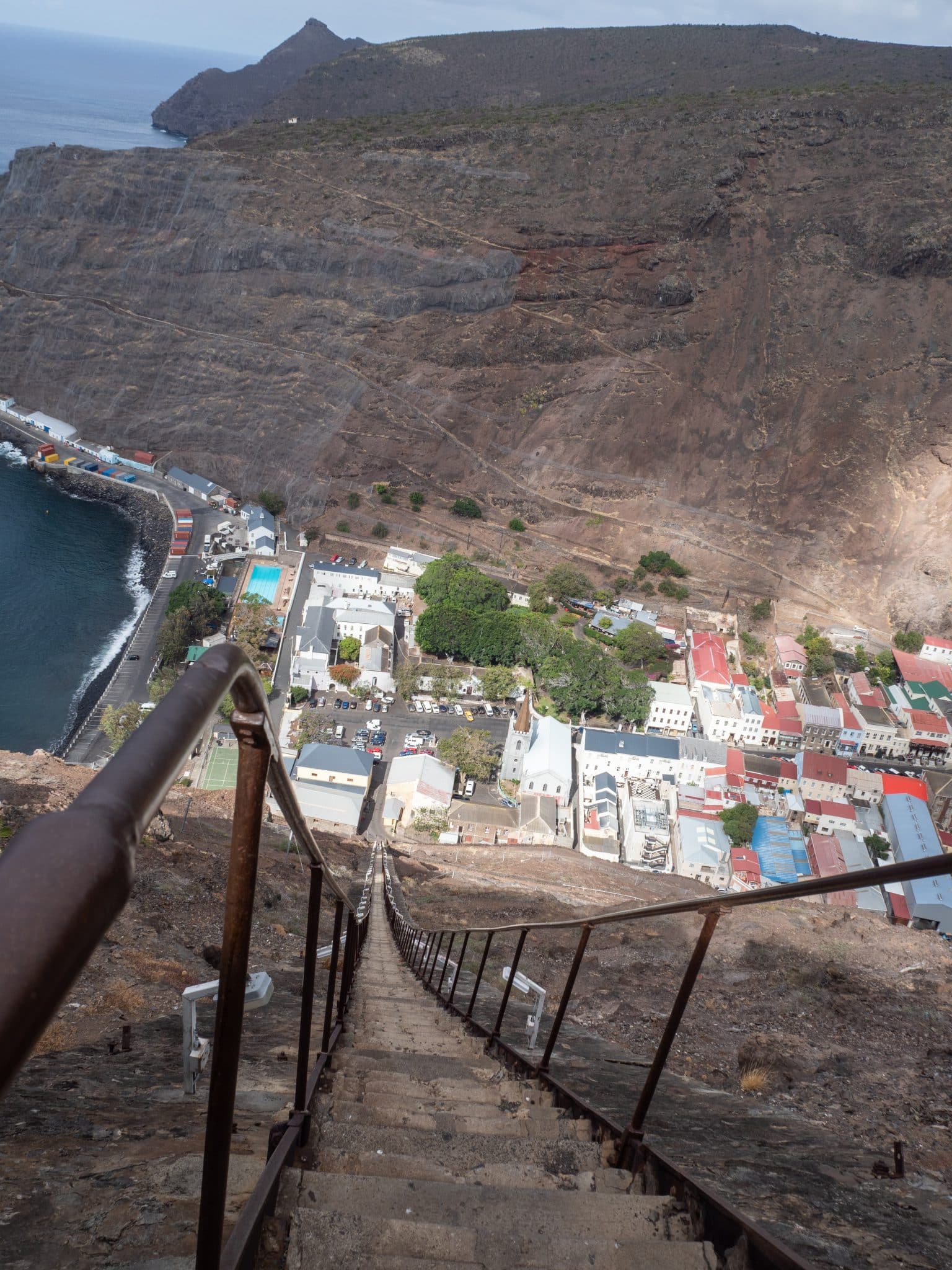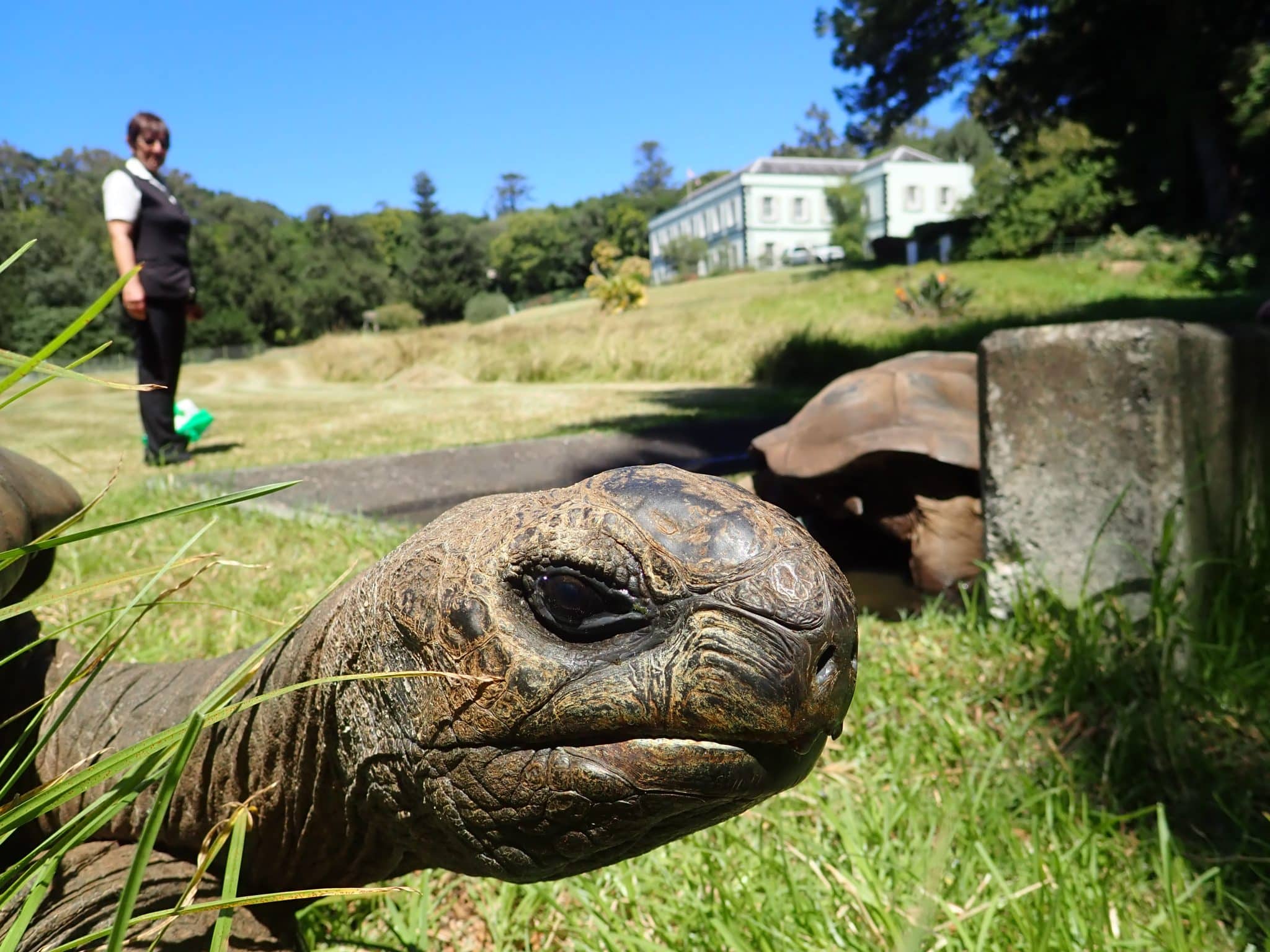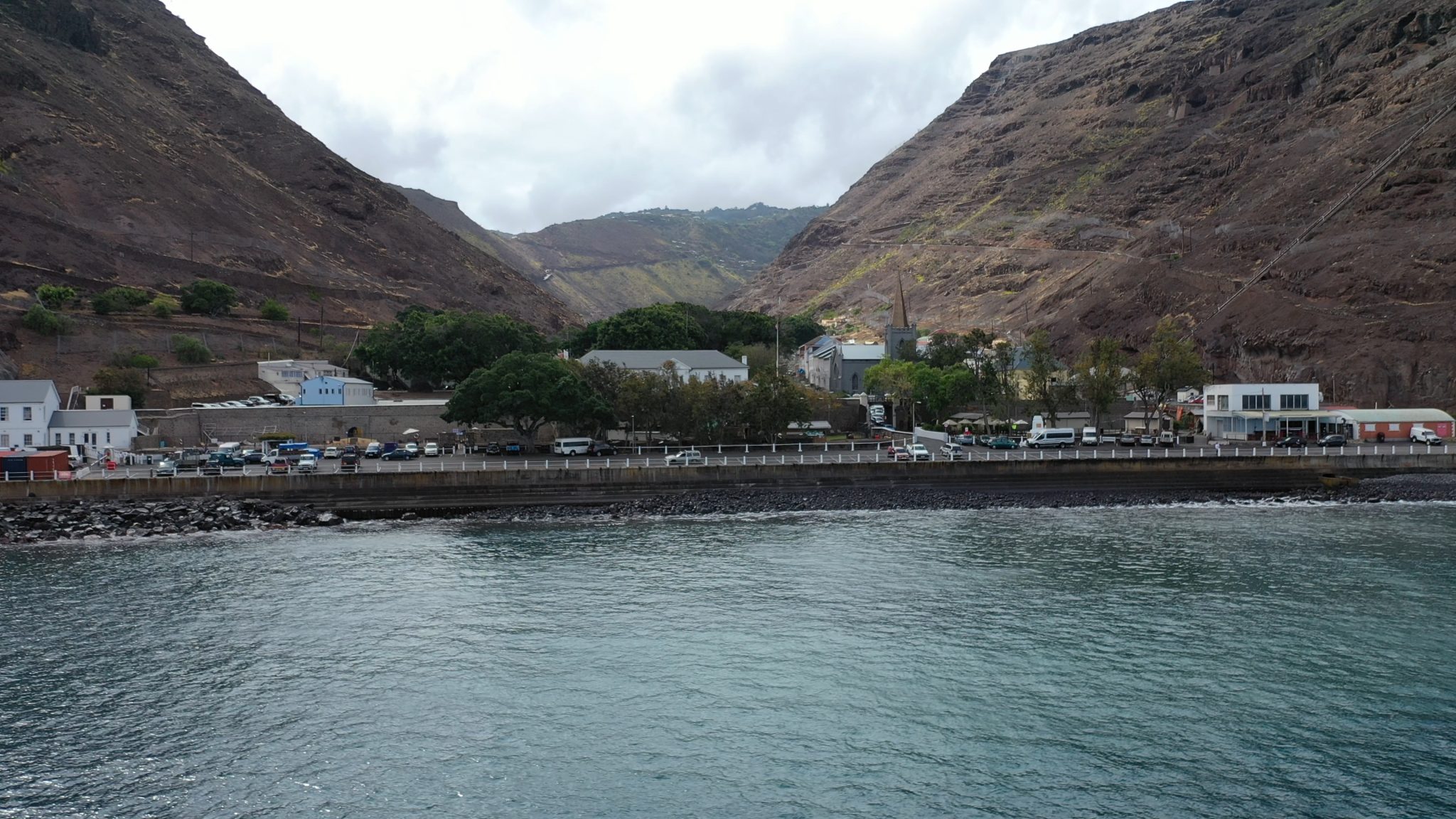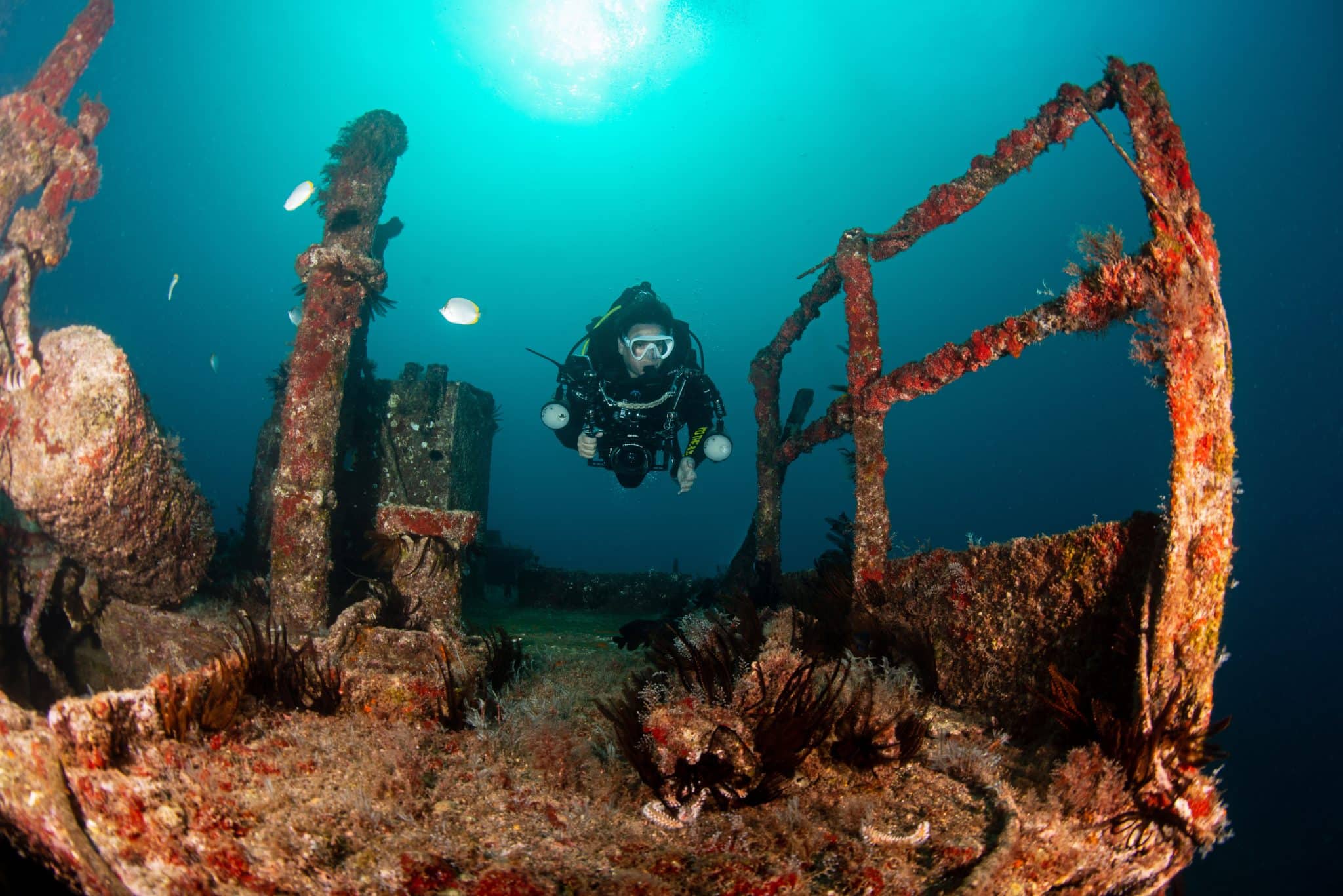

Overview
Fact File
| Capital | Jamestown |
| Population | 6,111 |
| Languages | English |
| Time | GMT |
| International Dialling Code | +290 |
| Currency | St Helena Pound, British Pound Sterling can also be used. Credit cards are not widely accepted. |
| Tourist Board | |
| International Airports | St Helena Airport (HLE) |
About The Diving
The first thing you will notice as you descend is the sheer volume of fish, though common on all dives here, the sight is astounding against the backdrop of the volcanic landscape. The power of the Atlantic has created both dramatic seascapes and wrecks.
There are 8 easily accessible wrecks on the leeward side of the island, representing different era in St Helena’s history. From the Witte Leeuw, the oldest shipwreck sunk in 1613 to the Darkdale, a second world war casualty to deliberately scuttled artificial reefs like the Bedgellt there is plenty to explore.
As well as artificial reefs the islands rocky reefs are home to masses of fish and 700 marine species have been spotted here. With both unique endemic species to wonder at and pelagics such as wahoo, tuna, mobula rays, turtles, dolphins and whale sharks the waters around St Helena make for some unforgettable diving.
Video
Dive Highlights
Papanui
The Papanui is a passenger ship that sank in the harbour after a fire in 1911. The maximum depth is 12m, making it accessible for all divers, and giving lots of no deco time to explore. It is home to an abundant array of marine life.
Darkdale
A British Royal Navy Auxiliary Fleet Ship, sunk by a German U-boat in 1941 with loss of life, the Darkdale lies in 33-42m of water just off the Jamestown harbour. Though sombre, the wreck remains an impressive sight and the superstructure is covered in fish. A deeper site, this wreck is for more experienced divers. There is no hyperbaric chamber on St Helena so conservative dive profiles are recommended.
Long Ledge
One of the coast’s finest examples of topography is Long Ledge, a cave boasting some mind boggling biodiversity. Rose lace and orange cup coral adorn the walls, while nudibranchs, razor fish and crayfish inhabit the nooks and crannies. Night divers will be rewarded with octopus antics and visitors between January to June may be joined by green turtles and devil rays.
Whale shark safaris
Possibly the most unforgettable experience you can have here is the opportunity to swim alongside whale sharks. While not scuba diving, snorkelling with these gentle giants is a highlight of any visit. Every year between December and March fully mature male and female whale sharks gather off St Helena, leading experts to think the island may be an important breeding ground. Several local tour operators run ethical whale shark safaris, where up to 30 sharks may be spotted in a single day.
When To Go
January to March offers the best opportunity to see whale sharks and the weather is at it’s finest. June to December see the annual migration of humpback and sperm whales.

